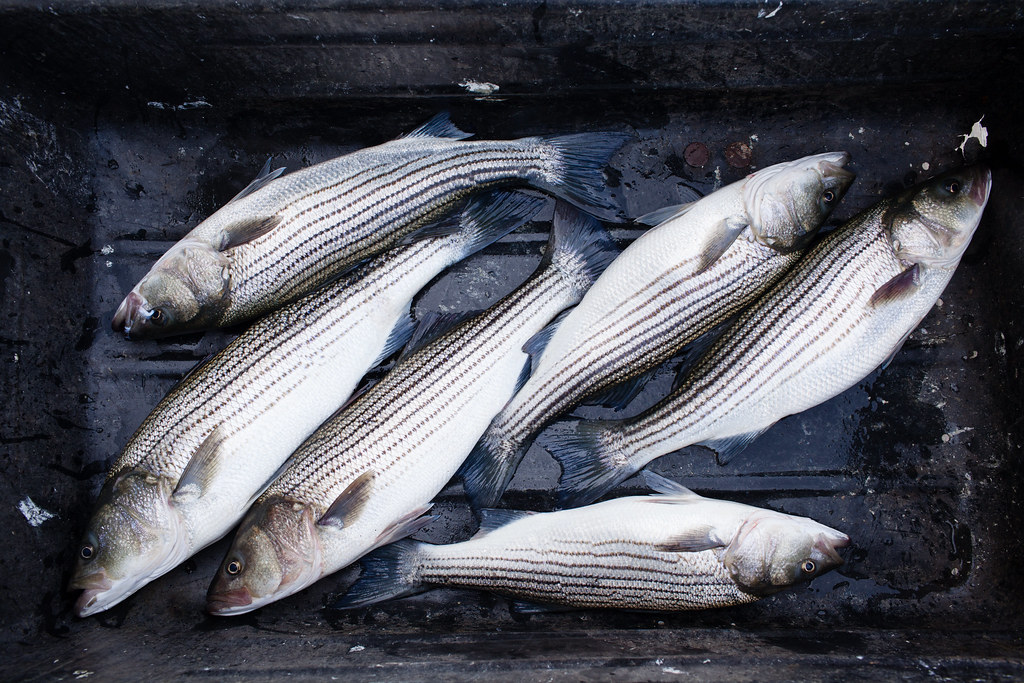Striped Bass
Morone saxatilis
Also known as the rockfish or striper, the striped bass is a large predatory fish with dark stripes running along its metallic sides. Part of the Atlantic Coast population lives in the Chesapeake Bay and its tributaries year round.
This section shows one large critter image at a time. Use the thumbnails that follow to select a specific image to display here.

This gallery contains a grid of small thumbnails. Selecting a thumbnail will change the main image in the preceding section.
Appearance
On average, adult striped bass grow 2 to 3 feet in length and weigh between 10 to 30 pounds, although they can reach a length of six feet and weigh as much as 125 pounds. Their elongated body varies in color from light or olive green to blue, brown or black, and their metallic sides are striped with seven or eight dark, continuous lines. Their belly is white. They have a dark, forked tail fin and three spines on their anal fin. A deep notch appears on their dorsal fin, and the first part of the dorsal fin has several spines.
Feeding
Striped bass feed on a variety of small fish and invertebrates, including worms, squid, menhaden, anchovies and crustaceans.
Predators
Predators include sharks, larger fish and fish-eating birds like ospreys.
Reproduction and life cycle
The striped bass is considered to be a semi-anadromous fish; most do not travel all the way from the ocean to their spawning grounds in freshwater rivers. Spawning occurs from April to early June in the Chesapeake Bay's tidal tributaries. During spawning season, several males court a single female, who lays her eggs in fresh or brackish water near the shore.
After spawning, adults swim downstream to the Bay, and some continue on to the ocean. Eggs hatch in two to three days, after which larvae move slowly downstream. Juveniles live in the shallows of tidal rivers throughout the summer. Most spend their first two years of life in the river in which they were born. Striped bass live 10 to 30 years.
Did you know?
- The striped bass is Maryland's state fish, and one of the most popular commercial and recreational catches in the Chesapeake Bay.
- The Bay is the largest striped bass nursery area on the Atlantic coast. Seventy to 90 percent of the Atlantic striped bass population uses the Bay to spawn.
- The oldest recorded striped bass was 31 years old. The largest recorded striped bass was 125 pounds, caught on the North Carolina coast in 1891.
- The Bay's record striped bass was caught in 1995 off Bloody Point, just south of Kent Island, Maryland. It weighed 67.5 pounds.
Sources and additional information
- Life in the Chesapeake Bay by Alice Jane Lippson and Robert L. Lippson
- Fishes of Chesapeake Bay by Edward O. Murdy, Ray S. Birdsong and John A. Musick
- Maryland Fish Facts: Striped Bass – Maryland Department of Natural Resources
